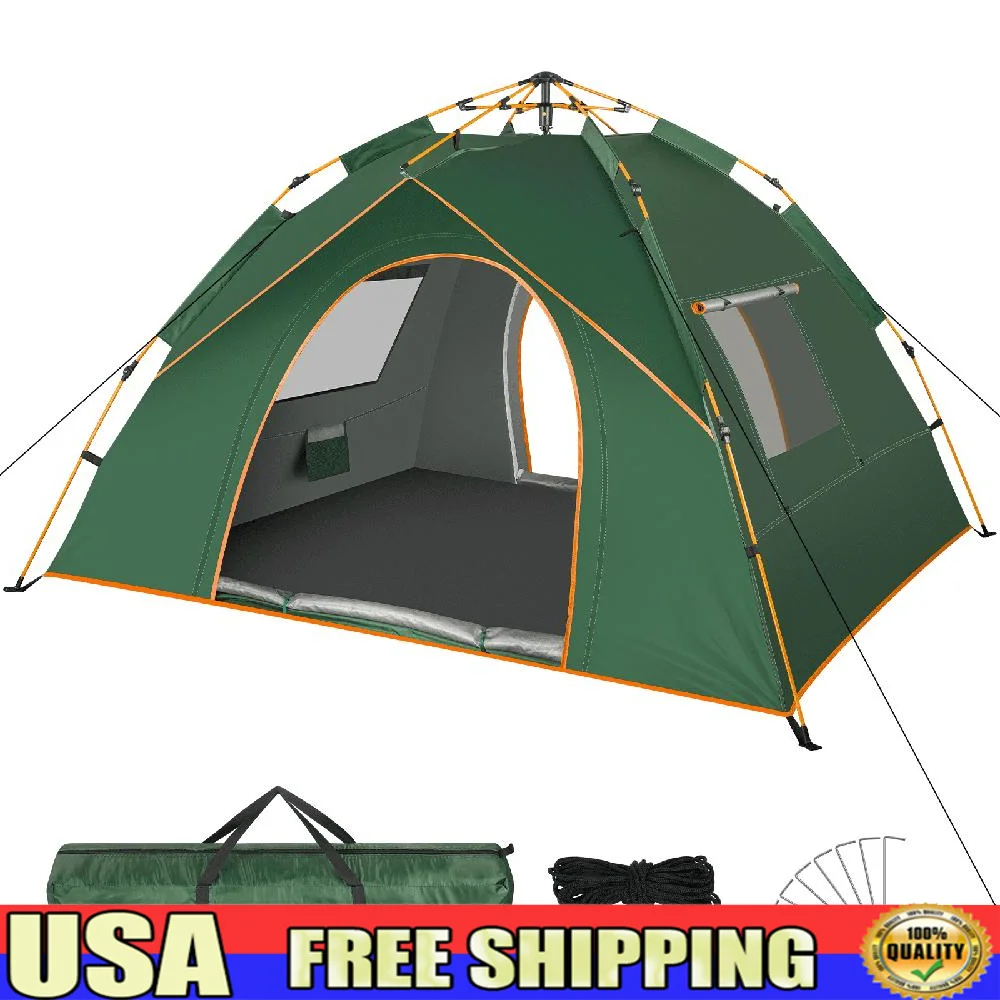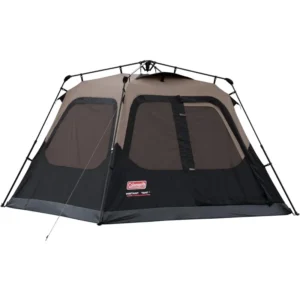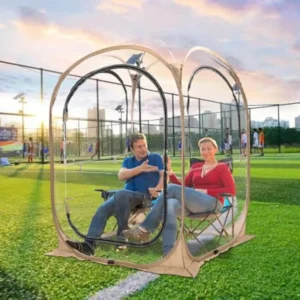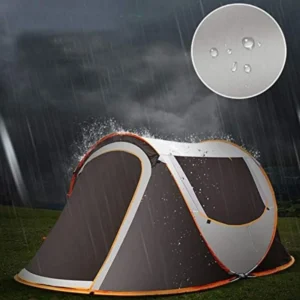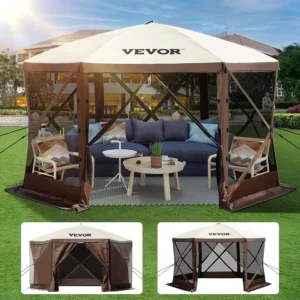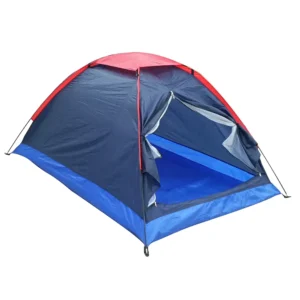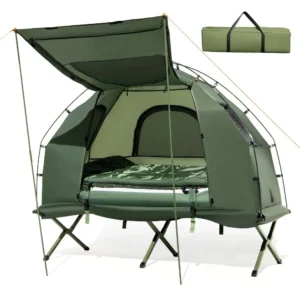Understanding Quick Pitch Tents: Definition and Basics
Quick pitch tents are innovative camping shelters specifically designed for rapid and easy assembly, taking the hassle out of traditional tent setup. These convenient structures have revolutionized the camping experience by dramatically reducing setup time from the typical 15+ minutes down to often less than 5 minutes—and in some cases, as little as 30 seconds for certain pop-up models.
At their core, quick pitch tents solve one of camping’s most common frustrations: complicated and time-consuming setup. They accomplish this through clever design innovations that eliminate the need for extensive pole assembly and sleeve threading found in conventional tents.
The main categories of quick pitch tents include:
- Pop-up tents: Feature pre-assembled structures that spring into shape almost instantly
- Instant tents: Utilize pre-attached pole systems that unfold and lock into place
- Inflatable tents: Use air beams instead of traditional poles, requiring only a pump to erect
These user-friendly shelters have gained tremendous popularity among casual campers, families, and festival-goers who value convenience and simplicity over the more technical aspects of traditional camping gear. For those exploring various finding your perfect quick-setup tent options, understanding these basics is essential.
The growing demand for easy-setup camping tents reflects how modern campers increasingly prioritize spending time enjoying the outdoors rather than struggling with complicated equipment. As you’ll discover in the ultimate guide fast setup tents, these innovative shelters mark a significant evolution from traditional camping methods.
The Technology Behind Quick Pitch Tents: How They Work
The magic of quick pitch tents lies in their innovative construction technologies that simplify the camping experience. Let’s explore the ingenious mechanisms that allow these shelters to be pitched in minutes rather than struggling with complex pole assemblies.
Pre-attached Pole Systems with Hub Connections
Instant tents utilize poles that permanently connect to the tent fabric and each other through central hub mechanisms. When unfolded, these interconnected frames expand and lock into position, creating the tent structure in one fluid motion. The hub system acts as a junction point, allowing multiple poles to extend outward simultaneously when deployed. Most instant camping tents use this technology to achieve their rapid setup.
Spring-Loaded/Coiled Frame Technology
Pop-up tents employ flexible, spring-loaded frames that remain under tension when packed. When released from their carrying bag, this stored energy causes the tent to “pop” into shape almost magically. The coiled frame technology typically uses lightweight but durable materials like fiberglass or flexible steel that maintain their shape while still being collapsible. Understanding how to pitch instant tents with this technology requires minimal instruction but proper technique.
Inflatable Air Beam Technology
Instead of rigid poles, air tents use inflatable beams made from durable, airtight materials. These beams are integrated into the tent structure and inflate to create rigid support when air is pumped in. The technology offers excellent stability while eliminating the need for pole assembly entirely—just attach a pump and watch the tent rise before your eyes.
Advanced Attachment Systems
Quick pitch tents replace traditional pole sleeves with clip systems, hooks, or fast-connect attachments that secure the fabric to the frame much more quickly. This eliminates the frustrating process of threading poles through narrow sleeves, significantly reducing setup time and complexity.
These technological innovations represent a fundamental rethinking of tent design principles, focusing on user experience and convenience without sacrificing necessary protection from the elements.
Types of Quick Pitch Tents: Understanding the Terminology
The world of quick pitch tents comes with its own vocabulary that can sometimes be confusing, especially since manufacturers often use terms interchangeably in their marketing. Here’s a clear breakdown of the main types:
Pop-up Tents
These tents feature a coiled frame system that springs into shape when unpacked. True pop-up tents require virtually no assembly—simply remove from the bag, and they automatically deploy in seconds. The benefits of pop-up camping tents include unmatched speed and simplicity, making them perfect for camping novices or situations where ultra-quick shelter is needed.
Instant Tents
While sometimes used synonymously with pop-ups, instant tents typically refer to designs with pre-attached poles connected by hub systems. They require the user to unfold the structure and extend the poles until they click into place. Setup usually takes 1-3 minutes, slightly longer than true pop-ups but still much faster than traditional tents.
Fast Pitch Tents
This term can be used both as a generic description for any quick-assembly tent and as a brand-specific designation. Generally, fast pitch designs incorporate simplified pole structures, color-coding, and quick-connect clips to speed up traditional tent assembly methods.
Air Tents/Inflatable Tents
These innovative designs replace conventional poles with inflatable air beams. Using a pump (often included), campers inflate the support structure to erect the tent. While setup takes slightly longer than pop-ups, the resulting structure offers excellent stability and often more interior space.
| Tent Type | Setup Mechanism | Packed Shape | Typical Use Case |
|---|---|---|---|
| Pop-up | Spring-loaded frame that deploys automatically | Flat circular disc | Festivals, beach trips, backyard camping |
| Instant | Pre-attached pole system with hub mechanism | Rectangular bag | Weekend camping, family outings |
| Air/Inflatable | Inflatable beams requiring a pump | Rectangular bag | Extended camping trips, family camping |
| Fast Pitch | Simplified pole system with quick clips | Rectangular bag | General camping, frequent campers |
The structure of these tents often follows the classic dome tent structure design, but with modified assembly methods. For those seeking specific options, pop-up dome tents combine the benefits of both design approaches—the stability of a dome with the convenience of pop-up assembly.
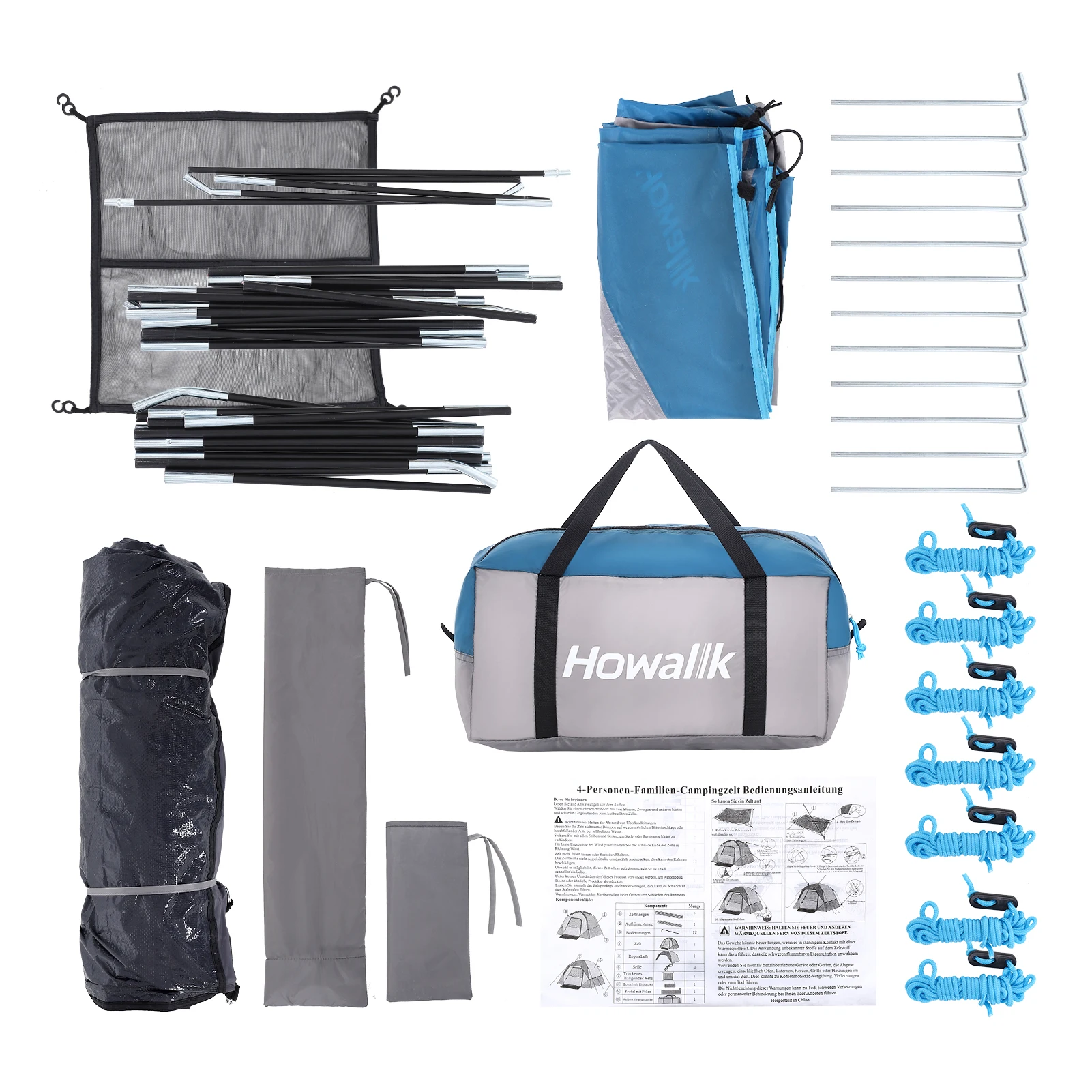
The Benefits: Why Choose a Quick Pitch Tent?
The rising popularity of quick pitch tents comes from their numerous advantages that address common camping frustrations. These benefits make them particularly appealing to casual campers and those who value convenience.
Dramatic Time Savings
The most obvious benefit is in the name—quick pitch tents can be set up in minutes or even seconds, compared to the 15+ minutes typically needed for traditional tent assembly. This time-saving feature means more of your precious outdoor time can be spent hiking, swimming, or simply relaxing instead of struggling with tent poles.
Simplified Setup Process
Quick pitch designs eliminate the confusion of sorting poles, threading sleeves, and deciphering complicated instructions. This simplicity makes them ideal for camping novices or anyone who finds traditional tent assembly frustrating. Pitch perfect stress-free tents allow campers to focus on enjoying their surroundings rather than battling with equipment.
Weather Response Advantage
When you’re racing against approaching rain or setting up in the dark, a quick pitch tent can be a true blessing. Being able to establish shelter rapidly during changing weather conditions provides peace of mind and practical protection when needed most.
Reduced Physical Effort
The streamlined setup of quick pitch tents requires less physical exertion, making camping more accessible to:
* Solo travelers managing equipment alone
* Older campers who may have physical limitations
* Families with young children requiring attention during setup
* Anyone camping after a tiring day of hiking or driving
Enhanced Camping Experience
Perhaps the most meaningful benefit is how quick pitch tents transform the camping experience itself. By removing one of camping’s most notorious hassles, these tents help preserve the joy of outdoor adventures. For rainy weather protection, waterproof pop-up tents offer both convenience and essential shelter from the elements.
Ideal Uses: When Quick Pitch Tents Excel
Quick pitch tents truly shine in specific camping scenarios where their unique advantages match perfectly with situational needs:
Music Festivals and Events
The festival environment is perhaps the perfect showcase for quick pitch tents. With limited space, crowded conditions, and the desire to maximize enjoyment time, the ability to set up quickly and pack away easily between events makes these tents the go-to choice for festival-goers.
Weekend Camping Trips
For short getaways where setup and takedown represent a significant percentage of your total camping time, easy setup tents for weekend camping dramatically improve the experience. When you have only 48 hours of escape, spending minimal time on logistics matters.
Family Camping with Young Children
Parents know that camping with kids requires constant attention. Quick pitch designs allow one adult to establish shelter rapidly while the other manages excited (or tired) children. This reduced setup stress can be the difference between a memorable family adventure and a camping disaster.
Beach Days and Outdoor Events
For day trips where temporary shelter from sun or wind is needed, pop-up designs provide instant protection without major time investment. Their lightweight nature and simple deployment make them perfect grab-and-go options for impromptu outings.
Backyard Adventures
For children’s backyard camping or overnight adventures, 2-person pop-up tents offer the perfect introduction to outdoor sleeping without the frustration of complicated setup that might discourage young enthusiasts.
Emergency Preparedness
The rapid deployment capabilities of quick pitch tents make them valuable emergency items, providing immediate shelter during unexpected situations or unplanned overnight stops.
Car Camping
When camping near your vehicle, the typically bulkier packed size of quick pitch tents isn’t a disadvantage, making them ideal for road trips and campgrounds with parking adjacent to sites.
Limitations: What to Consider Before Buying
While quick pitch tents offer remarkable convenience, they come with certain trade-offs that potential buyers should carefully consider:
Size and Weight Considerations
Quick pitch designs generally pack down larger and heavier than comparable traditional tents. The integrated pole systems and mechanisms that make setup fast also create bulkier packages that can be challenging to transport, especially for backpackers or those with limited vehicle space.
Weather Resistance Concerns
Many entry-level quick pitch tents sacrifice some weather performance for convenience. Their structures may be less robust in challenging conditions, particularly:
* Wind stability issues due to simplified pole structures
* Potential common waterproofing issues in pop-up tents from fewer guy lines and attachment points
* Less effective ventilation systems in basic models
Understanding what makes a tent windproof reveals that many quick-setup designs lack the additional supports and reinforcements found in technical camping tents.
Durability Factors
The mechanisms that enable rapid setup—particularly in budget models—can be vulnerable to failure with repeated use. Spring-loaded frames can lose tension, hub systems can crack, and inflatable beams can develop leaks over time.
Packing Challenges
While setup is easy, many quick pitch tents—especially true pop-ups—can be notoriously difficult to fold and pack away. The technique for collapsing these tents often requires practice and patience, creating a potential frustration point at the end of your camping trip.
Repair Difficulties
When components of quick pitch tents fail, repairs can be more complicated than with traditional designs. Integrated pole systems, in particular, may be difficult to replace or fix in the field.
Price Considerations
Quality quick pitch tents with good weather resistance and durability typically command premium prices compared to traditional tents of similar size and weather rating. Budget options may save money initially but could disappoint in performance or longevity.
Quick Pitch vs. Traditional Tents: A Comprehensive Comparison
To help you decide if a quick pitch tent is right for your camping style, here’s a direct comparison with traditional pole-and-sleeve tents across key factors:
| Factor | Quick Pitch Tents | Traditional Tents |
|---|---|---|
| Setup Time | 30 seconds to 5 minutes | 10-20+ minutes |
| Setup Complexity | Simple, often intuitive | Moderate to complex, may require instructions |
| Packability | Usually bulkier, disc or wide shapes | More compact, cylindrical shape |
| Weight | Generally heavier for comparable size | Can be very lightweight, especially backpacking models |
| Weather Resistance | Variable; often less stable in high winds | Generally better performance in adverse conditions |
| Durability | Mechanism-dependent; may fail sooner | Typically longer-lasting with proper care |
| Versatility | Limited to specific conditions | Adaptable across various environments |
| Price Range | Higher for quality options | Wider range from budget to premium |
| Repair Ease | Often difficult, mechanism-dependent | Usually straightforward component replacement |
Traditional tents excel for backpackers, extended trips, and challenging weather conditions, while quick pitch designs shine for convenience, simplicity, and scenarios where rapid deployment matters most. For those seeking quality options, exploring best instant tent outdoor adventures can help identify models that minimize these trade-offs.
How to Choose the Right Quick Pitch Tent: Essential Factors
Finding the perfect quick pitch tent requires balancing convenience with your specific camping needs. Here are the critical factors to consider before making your purchase:
1. Intended Use and Camping Style
Begin by honestly assessing your camping habits. Weekend car camper? Festival-goer? Family with young children? The best tent for best quick pitch tents travelers might differ significantly from what works for family campground stays.
2. Capacity and Sizing
Quick pitch tents often feel smaller than traditional tents of the same rated capacity. As a rule of thumb:
* For comfort, choose a tent rated for 1-2 people more than will actually sleep in it
* Check interior height measurements—many quick pitch designs sacrifice headroom for stability
* Consider vestibule space for gear storage separate from sleeping area
3. Weather Conditions
Match your tent to the conditions you’ll likely encounter:
* Light rain and fair weather: Basic models may suffice
* Moderate wind and rain: Look for models with additional guy points and quality rainfly
* Challenging conditions: Premium quick pitch tents with robust weather resistance in fast-pitch tents features
4. Construction Quality
Not all quick pitch tents are created equal. Assess:
* Fabric density (higher denier numbers indicate more durable materials)
* Seam construction (look for taped or welded seams)
* Pole materials (aluminum typically outperforms fiberglass for durability)
* Rainfly coverage (full coverage provides better protection than partial)
5. Setup/Takedown Balance
Some tents that pitch quickly can be frustratingly difficult to pack away. Watch videos of both processes before purchasing to avoid post-camping frustration.
6. Transportation Considerations
Will you be:
* Carrying the tent long distances? Prioritize packed size and weight
* Driving directly to your campsite? Bulkier options become viable
* Needing to fit it alongside other gear? Consider packed dimensions carefully
7. Budget Expectations
Quality quick pitch tents often cost more than traditional designs. Determine your price range realistically, understanding that ultra-budget options may disappoint in durability or weather protection.
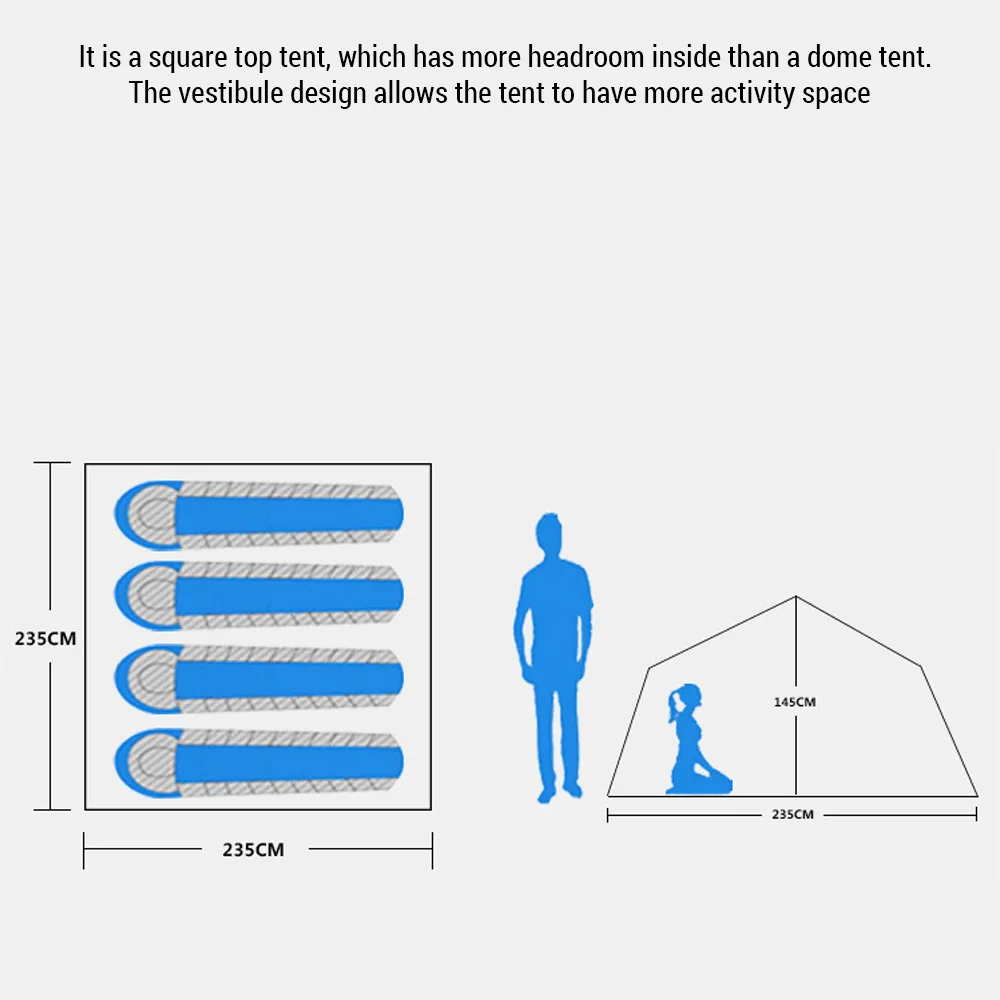
Easy Setup Camping Tent, Instant Camping Tent
Instant Cabin Tent Double Layer Canvas 1-Minute Setup Spacious Family Camping Shelter with Air Vents$308.10 Select options This product has multiple variants. The options may be chosen on the product pagePop Up Dome Tent, Waterproof Pop Up Tent
$218.89 Select options This product has multiple variants. The options may be chosen on the product page- $633.01 Select options This product has multiple variants. The options may be chosen on the product page
Easy Setup Camping Tent, Trekking Pole Backpacking Tent
$142.40 Select options This product has multiple variants. The options may be chosen on the product pageEasy Setup Camping Tent, Waterproof Camping Tent
All-in-One Elevated 1-Person Camping Tent Cot with Integrated Sleeping System for Outdoor Adventures$535.16 Select options This product has multiple variants. The options may be chosen on the product page
Frequently Asked Questions About Quick Pitch Tents
Are quick pitch tents waterproof?
Most quality quick pitch tents offer basic water resistance, but waterproofing varies significantly between models. Look for hydrostatic head ratings (1,500mm minimum for light rain, 3,000mm+ for heavier conditions) and fully taped seams. Budget models may require additional waterproofing treatment for reliable rain protection.
Can one person set up these tents alone?
Yes, this is one of their biggest advantages. Quick pitch tents are specifically designed for solo setup, with pop-up and instant designs being particularly simple for single-person deployment. Even larger family-sized quick pitch options can typically be managed by one person.
How long do quick pitch tents typically last?
With proper care, premium quick pitch tents can last 3-5 years of regular use. Budget models may show wear after just a season or two, particularly in the mechanical components that enable quick setup. Frequency of use, storage conditions, and weather exposure all affect longevity.
Are quick pitch tents suitable for winter camping?
Most quick pitch tents are designed for three-season use (spring, summer, fall) and perform poorly in winter conditions. Their simplified pole structures typically can’t handle snow loads, and their ventilation systems are rarely configured for cold weather camping. For winter use, traditional four-season tents remain the better choice.
Are pop-up tents good for backpacking?
Generally, no. The folded size and weight of most pop-up tents make them impractical for backpacking, where packed space and weight are critical concerns. For backpackers interested in easier setup, quick assembly tents guide can help identify lightweight alternatives with simplified (though not instant) pitch designs.
Beyond Setup: The Takedown Challenge
While quick pitch tents solve the setup problem brilliantly, many campers discover an unexpected challenge at the end of their trip: getting these tents back into their carrying bags can be surprisingly difficult.
Pop-up tents, in particular, require a specific folding technique that often feels counterintuitive. The spring-loaded frames must be carefully manipulated into overlapping circles—a process that can lead to frustration for the uninitiated. Even experienced campers may find themselves wrestling with a tent that seems twice the size of its bag.
Tips for mastering the takedown:
- Practice at home before your camping trip
- Watch manufacturer-specific video tutorials (folding techniques vary between models)
- Keep the instructions that came with your tent
- Use the “twist and fold” technique for pop-ups, folding in half, then thirds before twisting into circles
- For stubborn tents, try laying on the folded tent to squeeze out extra air before bagging
Lightweight pop-up tents can be particularly tricky to collapse due to their flexible frame systems, but the technique becomes easier with practice.
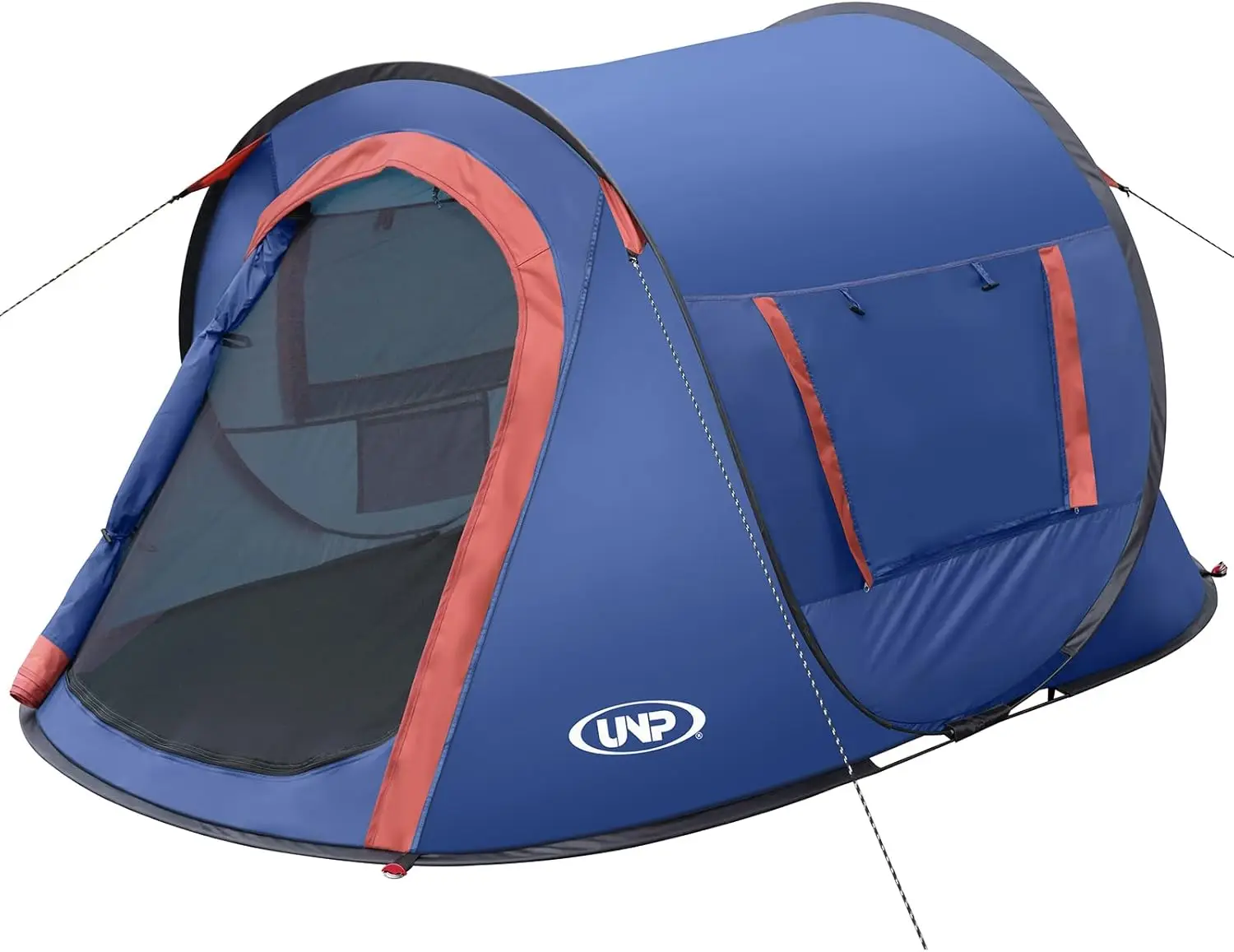
Is a Quick Pitch Tent Right for You? Final Considerations
After exploring the world of quick pitch tents, the question remains: is this the right choice for your outdoor adventures? The answer depends on your personal priorities and camping style.
A quick pitch tent may be perfect for you if:
- You value convenience and simplicity above all else
- You camp primarily in fair weather and protected campgrounds
- You’re new to camping or find traditional tent setup frustrating
- You frequently set up camp after dark or need to move locations often
- You camp with young children who require your attention during setup
- You use your tent for festivals, weekend trips, or casual outings
However, a traditional tent might serve you better if:
- You regularly camp in challenging weather conditions
- You need to minimize packed weight and size (such as for backpacking)
- You prioritize durability and long-term value over setup convenience
- You camp for extended periods where initial setup time is less significant
- You need specialized features not commonly found in quick pitch designs
The good news is that the gap between quick pitch convenience and traditional tent performance continues to narrow as designs evolve. Manufacturers like Explore Elements have developed models that increasingly offer the best of both worlds—combining rapid setup with improved weather resistance and durability.
Remember that the perfect tent is the one that enhances your outdoor experience by meeting your specific needs, whether that means ultra-fast setup or bombproof weather protection. By understanding the strengths and limitations of quick pitch designs, you can make an informed choice that will serve you well on your camping adventures for years to come.

